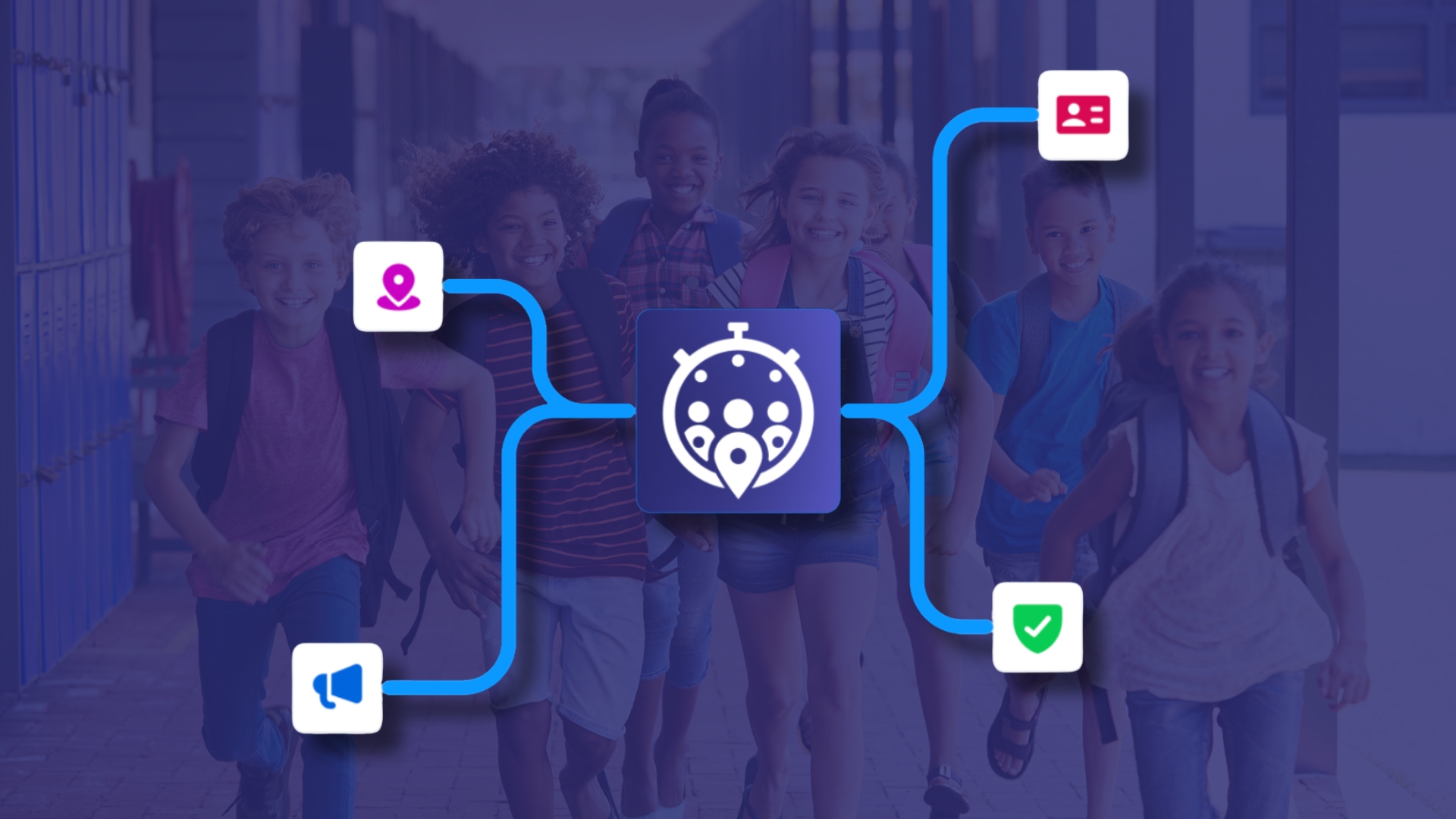The 8:47 AM Crisis
It's a Tuesday morning at your school. The phone rings at the front desk—a parent is concerned about a visitor they saw on campus. Your administrative assistant opens the visitor management system to check. The visitor seems legitimate, but there's something that doesn't feel right. Now she needs to alert security—that's a different system. She should also notify the classroom teacher—that's a third platform. And if this escalates to an emergency, she'll need the emergency alert system, the accountability system, and somehow coordinate with multiple communication tools.
Three systems, three logins, three chances for something to go wrong. And that's just the first hour of the day.
Sound familiar? Most independent schools are drowning in a sea of disconnected safety and communication systems, each solving one piece of the puzzle while creating a dozen new problems.
The System Juggling Crisis in Independent Schools
The typical independent school safety tech stack looks something like this:
Before Integration:
- Visitor Management: Paper sign-in sheets or basic standalone check-in system, if anything at all
- Emergency Alerts: Separate notification platform (often requiring manual triggers)
- Daily Attendance: Academic attendance in SIS (answers "Is my child in class?")
- Emergency Accountability: Paper rosters, separate point solutions, or manual processes (answers "Where is everyone right now?")
- Background Checks: Manual processes or third-party screening service, if any
- Communication: Multiple email and messaging tools across different platforms
- Door Access: Independent card reader system
- Incident Reporting: Paper forms or basic digital forms
The Hidden Complexity: Even schools using "comprehensive" attendance platforms often discover these systems excel at academic tracking but fall short during actual emergencies. You might have beautiful daily attendance reports, but when you need to account for every person on campus in real-time, you're back to paper lists and radio calls.
The Hidden Cost:
- Training nightmare: 6-8 systems = 6-8 training sessions, passwords, support contacts
- Data chaos: Student information scattered across platforms, often inconsistent
- Emergency delays: Critical response time lost jumping between systems
- Staff exhaustion: "Which system handles what again?"
Case Study: When System Juggling Nearly Failed an Entire School Network
The Jewish Federation of Greater Philadelphia faced a challenge that would overwhelm most individual schools: coordinating safety for 23 Jewish day schools and preschools, protecting over 6,000 students and 1,000 staff members across multiple locations.
Like most educational networks, each institution had assembled what seemed like comprehensive safety coverage:
- Various visitor management platforms across different schools
- Multiple emergency notification services
- Different attendance systems in each location
- Separate communication tools and procedures
- Inconsistent emergency response protocols
The Breaking Point: The 2022 Crisis
The fragmented approach's dangers became devastatingly clear during a significant threat in 2022 that required the immediate evacuation of one Federation school. What could have been a catastrophic coordination failure instead became a proof point for integrated systems.
The school had recently implemented Ruvna's platform. When the evacuation order came, Ruvna enabled the swift evacuation and accounting of over 300 children in under three minutes—a remarkable achievement that likely prevented chaos and potentially saved lives.
What Made the Three-Minute Success Possible:
- Real-time accountability: Staff could instantly see who was accounted for and who was missing
- No paper confusion: Mobile devices with live rosters eliminated guesswork
- Integrated tracking: Every person on campus—students, staff, visitors—tracked in one system
- Instant communication: Parents and emergency services received immediate, accurate updates
- Complete visibility: Administrators had full situational awareness across the entire campus
The System Juggling Problem at Scale: Before Ruvna, the Federation faced:
- 23 different schools with different system combinations
- Over 1,000 staff members trained on various disconnected platforms
- Inconsistent emergency procedures across the network
- No unified way to coordinate response during large-scale incidents
- Parents receiving different types and quality of communication depending on which school their child attended
As Scott Kearns, the Secure Community Network Security Director at the Federation and former FBI Agent, explained: "As a former FBI Agent and Crisis Management Coordinator, I know firsthand how important it is to have an accurate count of all personnel as quickly as possible in a crisis situation. Ruvna's platform gave us that ability, and we saw the need to implement it in all our schools."
The Ruvna Transformation: From Crisis Response to System-Wide Excellence
The Strategic Decision: After witnessing Ruvna's performance during the 2022 crisis, the Federation made a comprehensive commitment. In December 2023, they entered into a three-year contract to implement Ruvna across all 23 institutions, including religious schools at synagogues with preschools.
The Implementation Challenge: Unlike a single school transition, this required:
- Coordinating across 23 institutions with unique operational needs
- Training over 1,000 staff members on integrated platform
- Customizing solutions while maintaining consistency
- Ensuring seamless emergency coordination network-wide
The Three-Week Transformation Process: Ruvna's implementation specialists worked closely with each of the 23 schools to customize the platform to their unique needs. In different cohorts and a three-week period, administrators and staff received hands-on training, ensuring complete preparedness for emergency situations.
System-Wide Results:
- 23 schools successfully implementing unified platform
- 6,000+ students now protected by integrated safety system
- 1,000+ staff members trained on comprehensive, coordinated procedures
Through Ruvna's integration of Accountability, Attendance, Announcements, and Visitor Management, the Federation achieved what fragmented systems never could: precise campus awareness, real-time accountability during crises, and seamless parent communication.
Security Director's Assessment: "We've greatly increased our level of security at our schools," noted Scott Kearns, emphasizing how Ruvna's Accountability and Announcements features improved critical information flow and brought reassurance to parents during emergencies.
This wasn't just about replacing old systems—it was about creating a coordinated safety network that could protect thousands of students and staff with the precision and speed that saves lives.
The Power of Being Prepared
The Federation's transformation from fragmented systems to unified safety demonstrates what's possible when schools stop accepting "system juggling" as inevitable. In those critical three minutes during the 2022 evacuation, the difference between integrated and fragmented systems wasn't just operational efficiency—it was the difference between chaos and coordinated response, between confusion and clarity, between uncertainty and the assurance that every single person was safe and accounted for. Your school doesn't need to experience a crisis to discover whether your current systems will hold up under pressure. The question isn't whether an emergency will happen—it's whether your school will be ready with systems that work together, not against each other.
Experience the Confidence of True Integration
Read the complete story behind the Jewish Federation of Greater Philadelphia's network-wide implementation—from that critical three-minute evacuation to coordinating 1,000+ staff members across multiple locations.
Read the Full Jewish Federation Case Study - Discover how one platform transformed safety coordination across an entire educational network.
Ready to eliminate system juggling at your school? See how Ruvna's integrated platform transforms disconnected safety tools into a unified solution that protects your entire campus. Schedule a personalized demo today and discover why over 800+ schools nationwide now rely on Ruvna for comprehensive safety and accountability.
Schedule Your Demo - See firsthand how unified systems can empower your team every day.
Latest articles

New Funding Opportunity Most Florida Independent Schools Don't Know About

The December Reality Check: What Your January Emergency Drills Will Reveal About Your Systems



